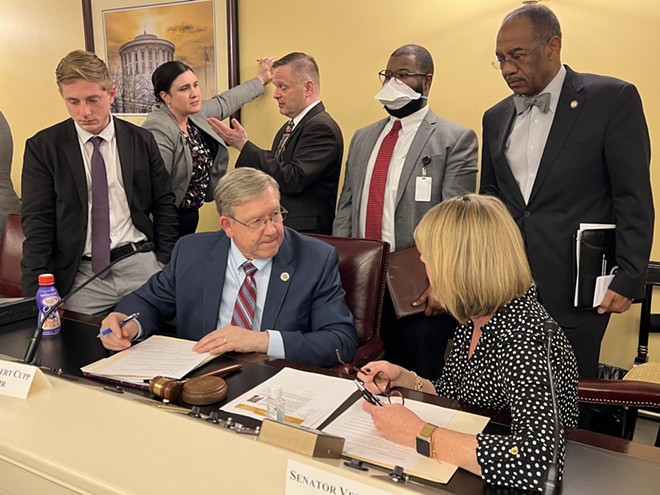
A federal court says without action in the latest legislative redistricting process, they will institute a previously rejected map into the 2022 election.
The three-judge panel of the U.S. District Court for the Southern District of Ohio Eastern Division has previously held back from making decisions in the uncertain redistricting effort concerning state Senate and House districts, and they continued that stance in a Wednesday decision, with one caveat.
The court was awaiting a decision by the Ohio Supreme Court on a fourth stab at maps, a stab which ended up with a simple majority vote by the Ohio Redistricting Commission on a slightly revised version of the third maps. The commission also rejected new maps drawn up by two independent mapmakers, at a cost to taxpayers of $89,000, $450 per hour for each Dr. Douglas Johnson and Dr. Michael McDonald.
The state supreme court gave the ORC until May 6 to draw an entirely new legislative map, saying once again that the map favored Republicans beyond the advantage shown in election results in the state.
The federal judges set a Wednesday date as the day it would decide yet again if it would make a move in the lawsuit before it, which was filed by GOP voters who said a lack of a map was violating their right to vote.
That date passed without any movement from the ORC on their fifth attempt at maps, and the date was considered a “drop-dead” date for the Ohio Secretary of State to be prepare for an August 2 primary solely for legislative races.
Chief Judge Algenon Marbley, Judge Amul Thapar and Judge Benjamin Beaton argued that now the confusion falls into the area of voter rights, something the U.S. Supreme Court has said can be remedied via the adoption of a map by a federal court.
“But they must do so only as a last resort, after giving states every opportunity to carry out elections consistent with state law,” the judges wrote on Wednesday. “That is where we find ourselves today.”
With the options presented to the court, which included the third map previously rejected by the state supreme court, the independent mapmakers maps and even the original maps from 2010, the judges said the third map “has one significant advantage over the others – a shorter timeline between selection and election.”
“That is because the counties had already begun implementing that map when the Secretary of State told them to ‘press pause’ after the Ohio Supreme Court rejected it on March 16,” the federal court ruling stated.
Federal court intervention, the judges pose, “can restore a lawful and orderly election.”
So, Marbley, Thapar and Beaton are still planning to stay out of it…for now. They plan to give the commission until May 28 to implement a plan.
“But if the state remains unable to implement its own valid map that satisfies federal law, then we must implement Map 3 to safeguard the rights of Ohio’s voters,” the ruling states.
Even agreeing to use the third map approved by the commission, then rejected by the state’s highest court, comes from a “menu of unappetizing options,” according to the judges. But they hope it’s a “final pause in hope that Ohio finally approves a map that complies with federal and state law.”
The only thing on which the judges disagreed was which map to use as a remedy for the uncertainty. Chief Judge Marbley wrote his own decision agreeing that something needed to be done, but arguing against the remedy of the majority.
“The commission’s third map – which the majority adopts as its choice relief – is irredeemably flawed,” Marbley wrote, adding that he would have chosen the map of the independent mapmakers.
Marbley went on to say the process of redistricting as it’s gone so far means Ohioans “have every right to be alarmed.”
“They voted overwhelmingly to end the hyper-partisan redistricting process that yielded the 2010 maps, but the practical effect of the majority opinion is to set aside their command of fair representation,” Marbley wrote.
Marbley, Thapar and Beaton said they will order a special election on August 2 if the state doesn’t come up with a plan by May 28 for General Assembly races, considering this the “least disruptive, costly and confusing way for a federal court to preserve Ohioans’ right to vote in primary races required by state law.”
The rest of the primary races, including congressional races and statewide officials, are already under way, on the ballot for May 3.
Originally published by the Ohio Capital Journal. Republished here with permission.
